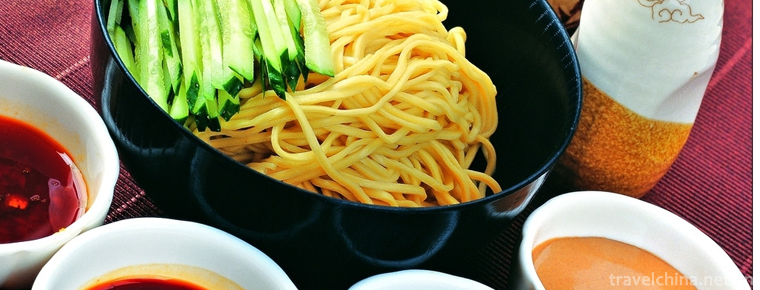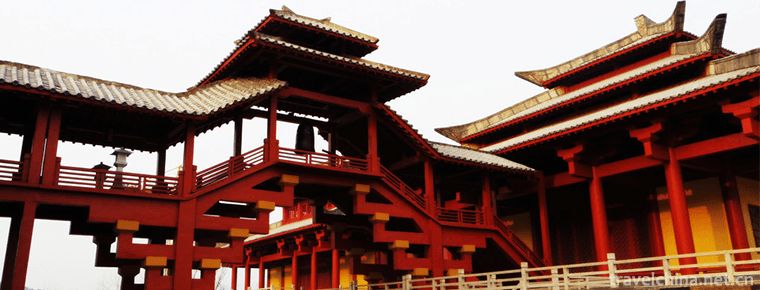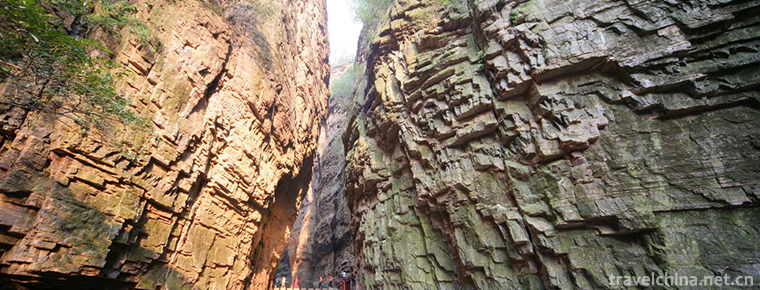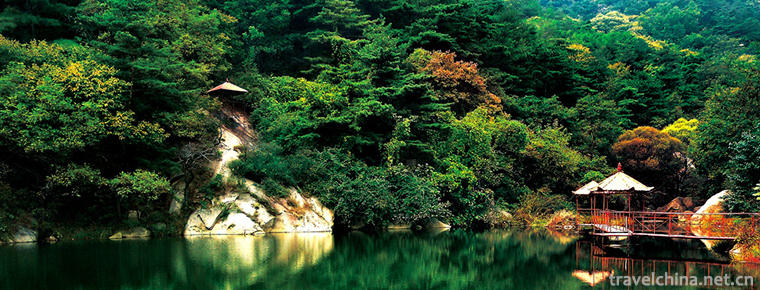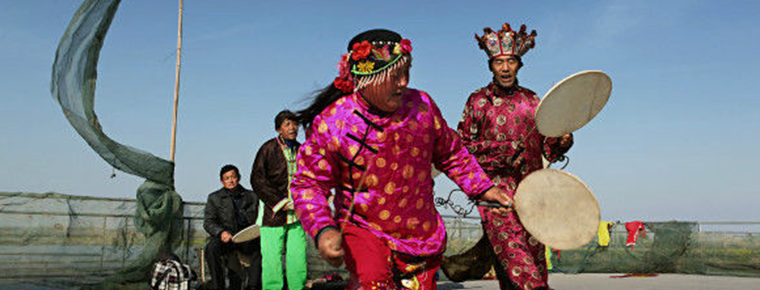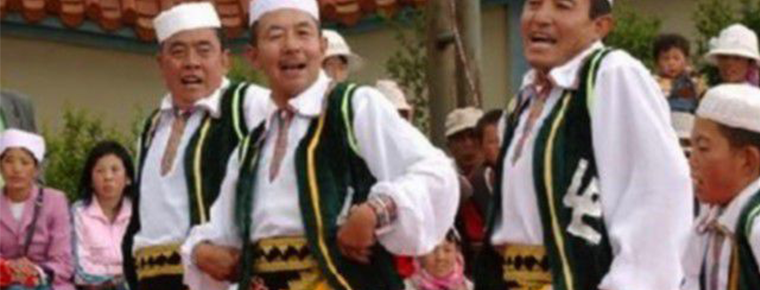Turn over to the nine floor
Turn over to the nine floor
The Ninth Floor, also known as the Ninth Floor, is a traditional folk activity popular in northeastern Fujian and southern Zhejiang. It is mostly used in rituals such as praying for rain, praying for blessings and disaster relief. The performance of turning over the ninth floor is simple, but the action is very dangerous. It was successfully selected into the national non-legacy list in 2008. With Xiaoshan becoming more and more famous for "turning over the ninth floor", the performing area has gradually expanded from Xiaoshan to Shaoxing, Zhuji and other surrounding cities.
In June 2008, Hangzhou and Dongyang City of Zhejiang Province declared that the ninth floor was turned over and listed in the second batch of national intangible cultural heritage list with the approval of the State Council.
historical origin
"Turn over the Ninth Floor ", also known as "hanging the Ninth Floor", was successfully selected into the national non-legacy list in 2008. The costume of the performance is simple, but the process is very dangerous. According to Xiaoshan local traditional folk custom, when people die, they need to "turn the ninth floor" to perform beyond the soul of death.
Talking about the origin of the ninth floor, it is derived from a long-standing traditional folklore. It was 226 years ago, when Qin Shihuang built the Great Wall, Meng Jiangnu went to the foot of the Great Wall to find her husband. When she learned that her husband had died in the process of construction, she burst into tears and set up a platform to shout for his grievance and surpass the soul of death, which caused the Great Wall to collapse. Since then, such a traditional folk custom has spread in the south of the Yangtze River. Its form of expression is to turn over the ninth floor, especially in the two towns of Puyang in front of Xiaoshan.
Folk activities
It's easy to perform on the ninth floor. Only four Chinese fir pillars, two folded tables and some fixed ropes are needed, while nine eight immortal tables can be borrowed from neighbors. When we got to the performance place, we began to set up a platform. We joined four wooden pillars into two 10-meter-long pillars. We found a flat place to fix them. Then we stacked nine eight immortal tables on top of them in turn and fixed them with ropes. On this basis, performers will also put two irregular small folded tables, table foot to table foot, as the "stage" of the performance. It's just that the "stage" is more than 10 meters high in the air. At the time of the performance, the loudspeaker suona blew up first. After the field became hot, the "ninth floor" began. At first, the performer has to make a "bottle-piercing" action. Only through the smooth passage can the performance continue. The performance began, and the performer first rolled over from the second eight immortals table below, and finally arrived at the small stack table. Then on the folding table, they perform the actions of grinding tofu up and down, Golden Chicken independence, boy worship Guanyin, inverted purple bell and swing. And all the performances, there is no security measures.
Qian Xiaozhan, the only heir of the Ninth Floor in Xiaoshan, was also named the representative heir of the national intangible cultural heritage. He said, "In fact, it is not easy to perform the Ninth Floor in peacetime." According to the folk custom, the main purpose of "turning over the ninth floor" is to die in excess of the dead soul. Therefore, we should be very careful. But once the performance is performed, even if it rains and winds, as long as the host does not stop, the performer must continue to perform. In fact, the "nine" of "turning over the ninth floor" is not an exact number, but an imaginary number, which means more. Qian Xiaozhan's turn over is called "Xiao Ninth Floor". There is also a "Big Ninth Floor". It is a pyramid shaped by 49 eight immortal tables. It does not even need to be fixed by wooden stakes. It is even more dangerous. However, the "Big Ninth Floor" has long been lost, leaving only "Xiao Ninth Floor".

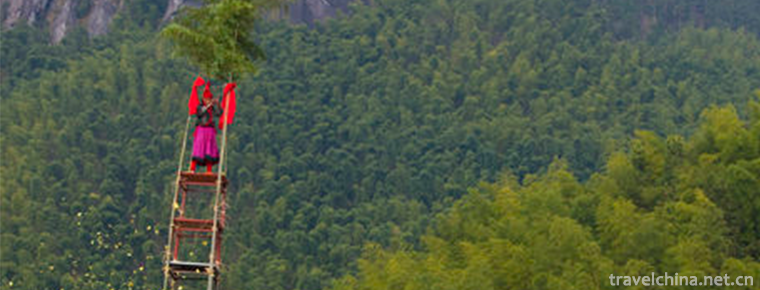
-
Cold Noodles with Sesame Sauce
Cold Noodles with Sesame Sauce are also called cold noodles.
Views: 133 Time 2018-10-12 -
Hengdian Film and Television City Scenic Area
Hengdian Film and Television City is a large-scale comprehensive tourist area which integrates film and television, tourism, vacation, leisure and sightseeing. It has been rated as the national AAAAA-.
Views: 166 Time 2019-01-13 -
Longtan Grand Canyon Scenic Area
Longtan Grand Canyon Scenic Area is the core scenic area of national AAAAA level scenic area, National Geological Park and Daimeishan World Geological Park. It is a Canyon Scenic.
Views: 113 Time 2019-02-06 -
Lushan National Forest Park
Located in the center of Shandong Province, Lushan National Forest Park is an important scenic spot of Boshan Scenic Tourist Area, with its main peak at 1108.3 meters above sea level, the highest peak.
Views: 147 Time 2019-02-06 -
Fishing Drum of Hongze Lake
The fishing drum of Hongze Lake, also known as Duan Encouragement, is a form of dance in which the singing and dancing were combined in a specific area when the old Shenhan burned paper for fishermen .
Views: 215 Time 2019-05-03 -
Hui Banquet Song
The Hui banquet song is one of the folk songs sung by the Hui people at weddings, festivals and Islamic festivals. Also known as "Family Music" and "Vegetable Music"..
Views: 351 Time 2019-05-04 -
Borneol Bridge
Luxian county is the "hometown of dragon culture" and "the hometown of Longqiao" in China. There are hundreds of ancient Longqiao bridges in the Ming and Qing Dynasties in Luxian County, which is the largest group of Longqiao in China and even in the world..
Views: 143 Time 2020-10-16 -
Guangyuan primary industry
In 2018, the annual grain sown area in Guangyuan City was 311300 hectares, down 0.5% from the previous year. The total grain output was 1.5641 million tons, down 0.4%. Among them, the grain output in spring decreased by 0.7% to 384900 tons, and that .
Views: 362 Time 2020-12-15 -
Neijiang scenic spot
Daqianyuan scenic spot is located in Yuanding mountain, Dongtong Road, Neijiang City, Sichuan Province. It integrates Zhang Daqian memorial hall, Zhang Daqian Museum, Zhang Daqian Art Museum, Zhang Daqian's former residence, Xilin temple, Lulan cave cliff tombs,.
Views: 326 Time 2020-12-16 -
Leshan landform
Leshan City is located in the transition zone from Sichuan basin to southwest mountainous area. The overall trend is high in Southwest China and low in Northeast China. The highest point is the main peak of Ma'anshan in Ebian Yi Autonomous County, with an altitude .
Views: 366 Time 2020-12-17 -
Nanchong cultural undertakings
By the end of 2019, Nanchong has 10 cultural centers, 242 cultural stations and 10 public libraries. There are 8 museums, 28 cultural relics protection and management institutions, 18 national key cultural relics protection units, 112 provincial-level cultural relics protection units.
Views: 297 Time 2020-12-17 -
Animal resources in Meishan
There are many species of wild animals in Meishan City, and the floristic composition is more complex, mainly subtropical forest animals. There are 469 species of terrestrial wild (vertebrate) animals, including 91 species of mammals, 18 orders, 27 families, 65 genera, .
Views: 332 Time 2020-12-18
